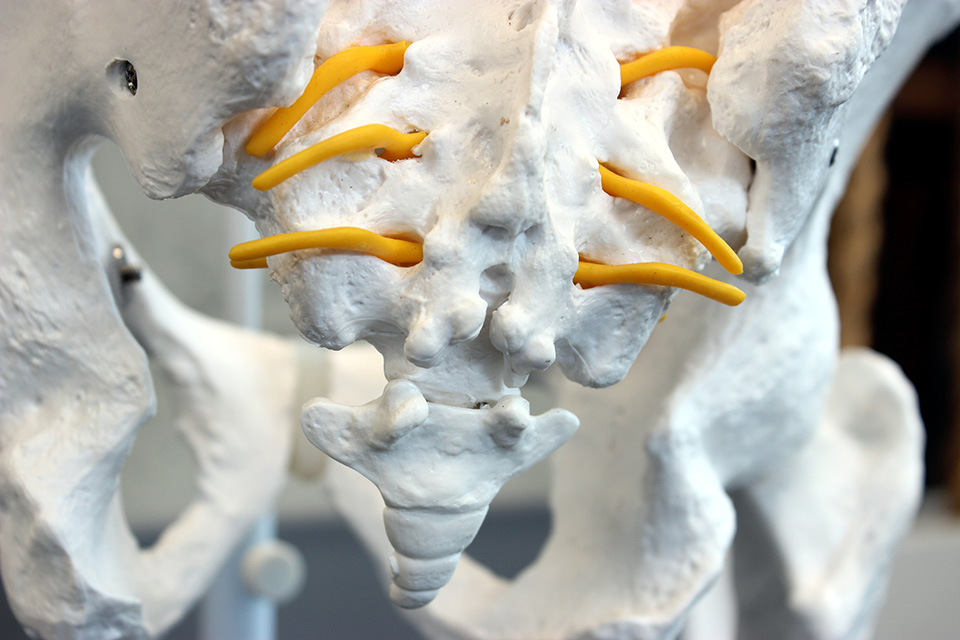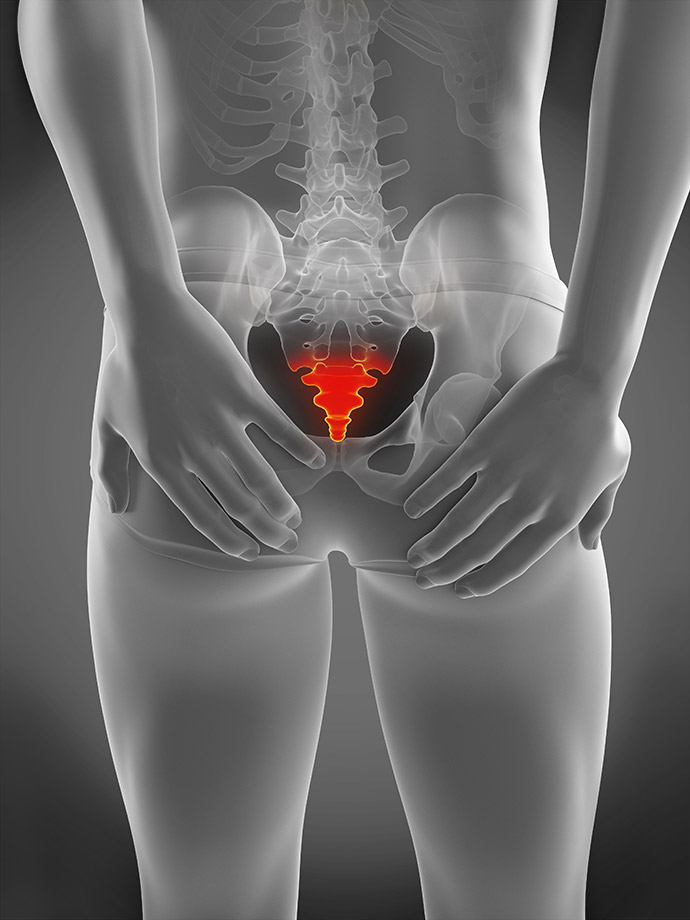Injections for Coccygeal Pain (tailbone)
What is Coccygeal Pain?
The coccyx (commonly known as the tailbone) is located at the very base of your spine, it is made up of 4 fused vertebrae and has many important functions; it helps to stabilise and support you when you sit and there are an array of muscles, ligaments and tendons that are attached to it.

The reasons for people suffering with pain in the area of the coccyx (known as coccydynia) can vary but are commonly due to the following;
-Trauma to the coccyx
-Joint damage from repetitive activity or wear and tear relating to ageing.
-Pregnancy can loosen the ligaments around and connected to the coccyx.
-Obesity-adding pressure to the coccyx when sitting.
Injections for coccygeal pain can be considered if pain is on-going and unresponsive to conservative measures such as anti-inflammatory medication, cushions, and hot/cold packs.
The injections involve a combination of local anaesthetic (used to numb pain) and steroid (helping to reduce inflammation and swelling).
The injection targets the junction of the lower pelvis (sacrum) and coccyx, and also a collection of nerve fibres sitting just in front of this joint.
This nerve collection is called the Ganglion Impar, and sends pain signals back to the brain. The injection aims to interrupt these pain signals and thus reduce pain.

What happens before the procedure?
Before being referred for coccygeal injections, you will need to be assessed by a specialist surgeon or practitioner who will take a full history of your symptoms and perform a physical examination.
They may need to send you for some imaging of the affected area of your spine such as an X-ray, CT or MRI scan that can be used to determine the underlying cause of your pain.
Coccygeal injections are usually considered only when less invasive treatments have failed such as painkillers, anti-inflammatory tablets and physiotherapy.
How do I prepare for my procedure?
Please inform us if you take a blood thinning medication when you arrange your appointment as some need to be temporarily withheld beforehand. Common blood thinning medications include antiplatelets (aspirin or clopidogrel) and anticoagulants (warfarin, apixaban, dabigatran, or rivaroxaban).
Do not stop any medication before talking to us.
Diabetics should closely monitor their blood sugar level before and after the procedure as the steroid medication in the injection can affect this for several days.
You will need to arrange for someone to bring to you to the hospital and to drive you home after the procedure. Ideally you should have someone stay with you for 24 hours after your appointment.
You should not drive for 24 hours following the procedure.
What does the procedure involve?
Coccygeal injections are performed in the hospital as an outpatient under local anaesthetic.
You will go home the same day, and not require sedation or general anaesthetic.
A specialist doctor (Radiologist) will carry out the procedure in a room with a special X-ray camera, called fluoroscopy. The injections only take a short time but the whole procedure may take up to 20 minutes including the X-ray imaging.
You will be asked to lie on your front for the procedure and a pillow will be placed under you pelvis, we will aim to make you as comfortable as possible. The doctor will then clean the skin on your back with antiseptic and cover with sterile drapes.
The skin of the affected area of the lower back will be injected with local anesthetic to numb any pain. The doctor will then guide the needle to the correct position with the help of live X-ray images. Once in position, the doctor will inject the mix of local anesthetic and steroid into the Ganglion Impar (group of nerves) just in front of your sacrum/coccyx, and also in and around the junction itself. The needle will then be removed.
You will usually be able to go home half an hour after the procedure is finished.
What are the risks of the procedure?
There is a small risk of pain, infection, bleeding, failure to improve symptoms and allergic reaction to the medications used. You may also experience increased pain for a few days after the injection however this will settle.
How will I feel after the injection?
After the injections you may experience an immediate improvement in symptoms from the injection of local anaesthetic. This effect usually lasts for 12-24 hours.
The steroid medication usually takes two to three days to have an effect and typically peaks at one-two weeks. Regular pain relief medication can be continued as required.

